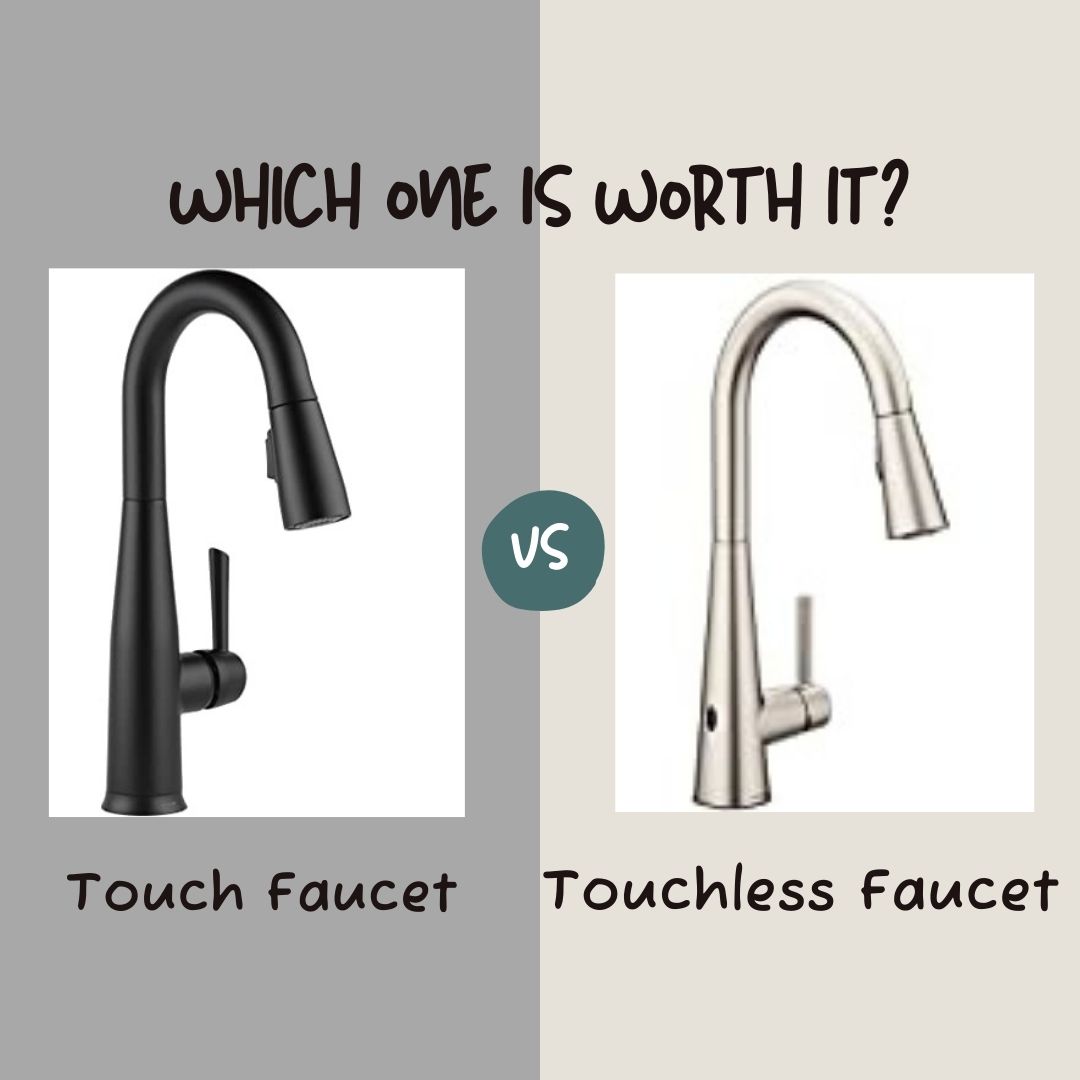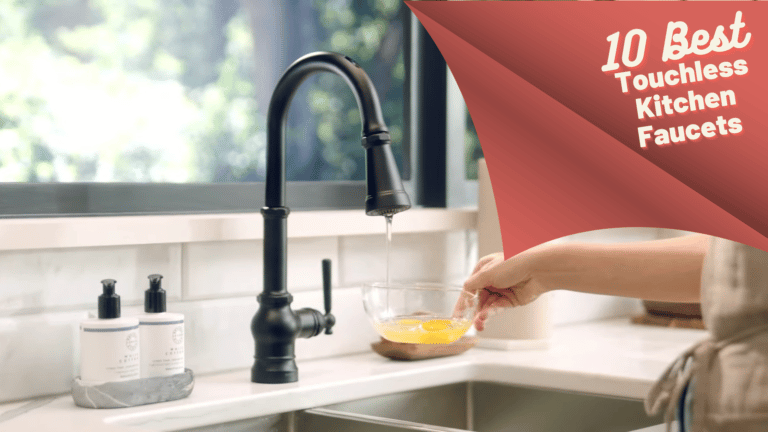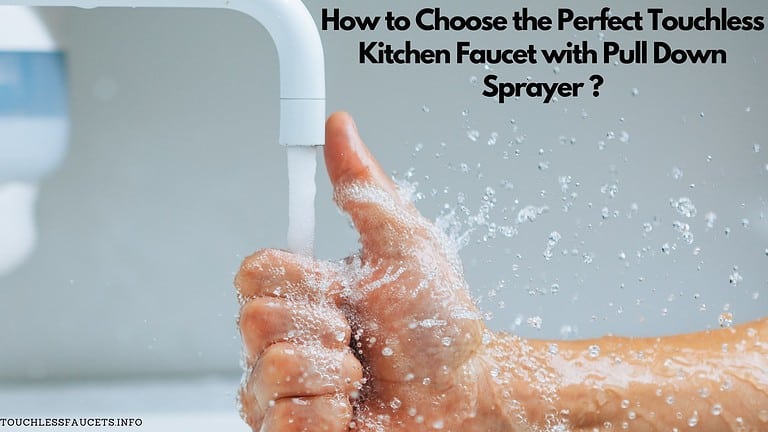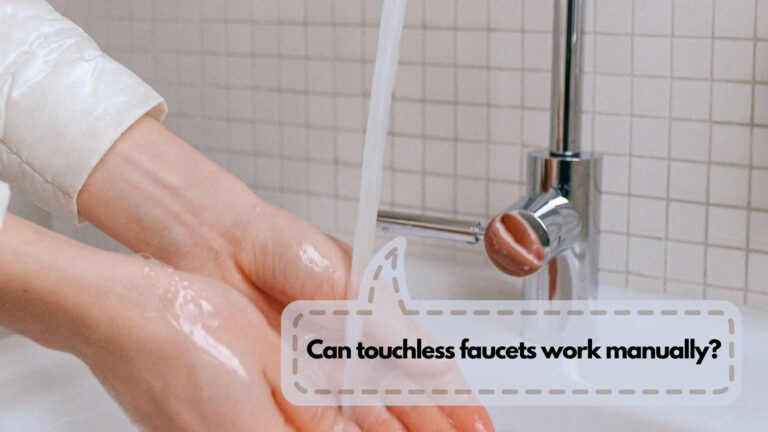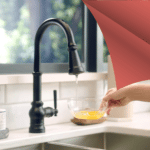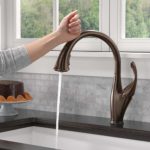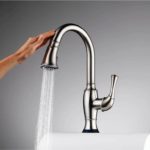If this is your first time hearing about touch and touchless kitchen faucets, you can be forgiven for being confused about which one is right for your home. Faucets have come a long way in the last few years, and I’m sure you have seen your fair share of advertisements for both touch and touchless faucets. . But are touch and touchless faucets worth the cost? Although some of these seem like a fun feature, do they really do much for your kitchen?
A touchless faucet is a great choice for everyday use since you don’t have to physically touch your faucet to use it. This will keep germs off your faucet handles, making your kitchen more hygienic. There are a lot of people who prefer touch faucets because of the additional control it offers them. You know exactly what you will get when you touch the faucet, so it is less likely that you will accidentally switch it on or off.
After spending countless hours online, We were able to gather at least a list of big advantages and disadvantages of both of these faucets. There are nuances that can help you choose more easily and there might be something in here for even the most demanding people.

Touch vs Touchless Faucet
The main difference between touch and touchless faucets is that touch faucets need physical contact, while touchless faucets can be activated by simply moving your hand in front of the sensor. A touch faucet also called a touch-sensitive faucet uses a disruptive energy field. So when you touch anywhere on the faucet’s body will activate. The advantage of this type of faucet is that it can be used by everyone in the household. Touching anywhere on the fixture will turn it on. This is very helpful for children and older people who might have more difficulties using a manual handle. A touchless faucet is the opposite of a touch faucet. You don’t have to touch anywhere on the body. There is an infrared sensor underneath touchless faucets that detects when your hands or other objects are close enough to activate them. Most people like to use a touchless faucet in public places because touchless faucets are safer in germ-free environments. Both types of faucets have their pros and cons, but we will explain why we think one type is better than the other.
How Do Touch Faucets Work?
In the simplest terms, touch faucets are operated by a simple flow of electricity. That electric charge is generated by the human body. When a person touches the faucet, some of that electricity leaves their body and transfers to the faucet, causing a reaction. … This change in capacitance is detected by the sensor in the touch faucet, which then activates the water flow. These sensors are so sophisticated that they can tell the difference between a single touch and a prolonged grab, for example, when cleaning the faucet.

These are the Pros and Cons of choosing a Touch Sink Faucet
While there are plenty of great reasons to consider getting a touch sensitive kitchen faucet, there are also some drawbacks to consider. Naturally, there will be some people who love these faucets and other who hate them. They are definitely not everyone’s cup of tea.
If you are currently trying to decide whether or not it is worth the money to upgrade your current faucet to a touch one, here are some pros and cons that may help you make your decision:
Pros
- Ease of Use. One of the greatest benefits that you can expect from a touch faucet is that it will be very easy to use. You don’t have to reach for the handle and you can just tap it with your hand or forearm to initiate the flow of water. This is a great feature for anyone who cooks often.
- Child Friendly. Another advantage that you will see in this type of kitchen faucet is that it will be child-friendly. It can be very difficult for children to learn how to turn the water on and off properly without making a mess. As long as they can reach the faucet, they can use it by simply tapping anywhere on it with their hands or arms.
- Cleanliness. Another benefit of choosing a touch sink faucet is that it is clean to use. The sink itself will not have any contact with your hands, so you won’t have to worry about spreading germs. This means that you can use it freely with clean hands and keep yourself healthy while doing so.
- Water-saving. The water only runs for a limited time and then automatically shuts off. It runs only when you need it. As a result, touch sink faucets use less water than traditional faucets since they control water flow and reduce water consumption.
Cons
- Not Completely Touch-free. The biggest drawback to these types of faucets is that they’re not completely touchless. The touch sink faucets still need to be touched to turn on or off. However, this is not a big deal, since many of us already have to touch the faucet anyway.
- Expensive. Another disadvantage is the price. Generally, these types of faucets are more expensive than traditional ones since they have technology built-in. However, if we compare them with touchless ones, they are in the same price range.
- Tricky Installation. The installation of these faucets is a bit tricky. These faucets use capacitance to detect your touch, as we discussed before. As a result, they need to be well isolated. For example, touching a metallic countertop may activate the faucet. But don’t worry, they have ground wiring, so if you follow the instructions, you’ll be done with installation in no time.
- Replacing Batteries can be a bit of a hassle. They do need electricity to power up. So once in a while you’ll have to reach under the counter to replace batteries. Fortunately, most touch faucet-batteries last between 1 and 5 years, so it’s not like you’ll be doing it often.
Which touch kitchen faucets do we like best?
Kraus Touch Sink Faucet
Delta Faucet Essa Touch Bar Faucet
ARRISEA Touch Sink Faucet
FAQ about Touch Faucets
Do touch faucets turn off automatically?
Yes, touch faucets are designed to turn off automatically if you don’t use them for a period of time. Activating touch faucets is very easy. In other words, if you live around kids, they can play with them accidentally and waste a lot of water. Therefore, manufacturers have installed an automatic shut-off feature that turns off the water automatically if nobody uses the faucet to prevent accidental flooding.
Do touch faucets have batteries?
Touch faucets usually use either 6 AA or 4 AA batteries depending on what model you have. When the batteries fall below a certain voltage, the faucet will lose its ability to activate its sensor. If this happens, you can turn it on or off manually with the handle. The sensor only works as an extra feature when the handle is in the on position.
Why is my touch faucet not working?
Most touch faucets are powered by batteries, so when you first install the new faucet or when it has not been used for a while, it is important to check if the batteries need to be changed. Once you have replaced the batteries if the faucet does not work as expected, there are a few things you can do to try and fix it: 1. Check the Solenoid Valve: The solenoid valve is an electronic coil that controls the flow of water through your tap. This valve can become worn out over time and may need to be replaced. 2. Check for Low Water Flow: It is possible that you may have low water flow in your home, which can cause problems with your faucet working properly. In this case, you will probably want to call a plumber to check on this issue and see what they suggest. 3. Reset Your Faucet: After changing out batteries, locate the reset button, if any, on or near the battery compartment. Pressing this button should reset your system and allow it to receive commands again from your faucet.
Are touch faucets worth it?
Touch faucets have become a popular option in recent years, and it’s no surprise why: They’re cool, convenient, and futuristic. They also add a high-tech feel to your kitchen. Being able to turn the faucet on without touching a handle is very convenient, especially when cooking. However, it has a few drawbacks: it can be accidentally turned on, and you must manually adjust the temperature. Overall, yes, touch faucets are useful in real, everyday life. These faucets are extremely convenient for handwashing without having to worry about turning the water on and off with dirty hands.
How Do Touchless Faucets Work?
Touchless faucet technology is convenient, hygienic, and water-efficient. The automatic faucet works without the user having to touch the tap itself. This makes it a good choice for homes that want to minimize germs while also saving on utility bills. The sensor is what triggers the faucet to turn on or off. Most touchless faucets use infrared sensors, which are located in the neck of the spout. When an object comes into close proximity of the sensor, it sends a signal to turn on by activating a solenoid valve. A solenoid valve is a device that uses electricity to open or close valves that control water flow. Once the water is flowing, it will stop after a predetermined amount of time (usually around five seconds). The solenoid valve will then send a signal back to the sensor to turn off once the hands are no longer detected in front of it.

These are the Pros and Cons of choosing a Touchless Sink Faucet
Pros
- Saving Water and Bills. A touchless faucet is a great way to save water as it only releases water when you want it. So you do not have to keep turning the faucet on and off as you wash your dishes. This saves the water that would otherwise go down the drain when the faucet is left on yet you are not using it. The result is less water used in your home which means lower water bills at the end of the month.
- A Clean Environment. Since you don’t have to touch the sink in order for the faucet to turn on, there’s less chance for germs to be spread. This can help make your environment much cleaner since bacteria and viruses can live on surfaces for a prolonged period of time.
- Everyday Convenience. There’s no need to turn an actual handle in order to get any water out of the sink, which makes these types of faucets very convenient. All you have to do is wave your hand and you can get as much or as little water as you want.
- Accessible to Everyone. Another benefit of these faucets is that they’re easier for everyone to use regardless of their condition or disability. For instance, if someone has an arm injury or arthritis.
Cons
- They are Pricey. Touchless faucets are more expensive than traditional models. That’s because they’re made with advanced technology so you can control the flow of water without having to manually operate the handle. As with any type of purchase, it’s important to look at your budget and decide if this feature is worth the extra cost.
- Accidental activation. Since touchless sink faucets are activated by motion sensors, there is a risk of the water turning on accidentally. For example, if you brush your hand against the handle as you walk by the sink or if something brushes up against it in a gust of wind, the water could start running. This can be wastewater.
- Battery issues. Like many other electronic devices, touchless faucets require power from batteries. If you don’t replace the batteries regularly, your faucet may stop working as expected — and that could mean a lot of hassle for you when it’s time to wash your hands or do dishes.
- Sensor Failure. Sometimes the touchless faucets sensor won’t respond. Don’t worry, mainly is dirty or something is obstructing it.
Which touchless kitchen faucets do we like best?
Pfister Stellen Touchless Faucet
Kraus Bolden Touchless Faucet
Moen Arbor Touchless Faucet
FAQ about Touchless Faucets
How do touchless faucets mix hot and cold water?
Most touchless kitchen faucets have an integrated mixing valve that allows you to set the temperature and control the flow of hot and cold water. There are mainly two ways to set the mixing valve: manually or electronically. You can use the handle normally if you are in manual mode. When you pull the handle back and forth, you can mix the flowing water at your desired temperature. During hands-free operation, the water temperature can be adjusted using the dial on the electronic box under the sink. Some models also allow manual operation of both temperature and flow rate control via an app.
Do touchless faucets need electricity?
The power source for a touchless faucet can be AC or battery-powered depending on your preference. If you choose an AC-powered faucet, you’ll need to plug it into a nearby outlet or add electrical wiring to your kitchen sink area. Battery-powered faucets are more versatile since they don’t require access to electricity. However, they do require battery replacement every few months or so.
Can a touchless faucet work manually?
Yes. Touchless faucets always have a manual override allowing you to use the faucet the old-fashioned way. You can find the bypass valve box underneath your sink. Inside is a knob that turns clockwise or counterclockwise. Turning the bypass counter-clockwise allows you to operate the faucet manually by turning it on and off with your hands. To operate automatically, turn the bypass clockwise.
Are touchless faucets more hygienic?
It turns out that the answer is yes. Studies have found that touchless faucets reduce bacterial contamination by up to 98 percent compared to traditional lever-style faucets. In a time when staying healthy is at the forefront of many people’s minds, touchless faucets offer a hygienic way to wash your hands without touching commonly used surfaces. These faucets use technology to detect when hands are placed beneath them, which triggers the water flow. The result? Less contact with faucet handles and other areas where germs can be found.
Are touchless faucets worth it?
Touchless faucets are absolutely worth it. Your hands do not touch any part of the faucet. Touchless faucets are especially good in public washrooms as you never know who had used the faucet before you. When you have dirty or full hands, are very helpful, as they reduce the spread of germs and bacteria, and they make cleaning up much easier.Another benefit of using these types of faucets is that they help conserve water and energy as well. These faucets are usually set up to turn on and off with a sensor, so there is no risk of water running when no one is using it.
The final choice
In the end, it’s up to you to decide what look, feel and functionality you prefer for your home. However, whether you ultimately go with touch vs touchless faucets depends on how you view their pros and cons. Without a doubt, both have a place in homes across the country and are great water saving tools. So take some time to research the models available to find what works best for your family.

